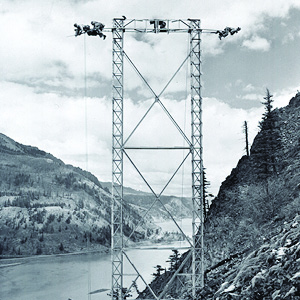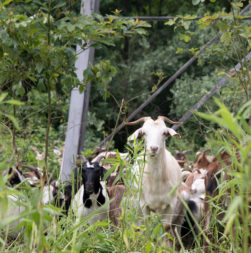Electrifying Rural America
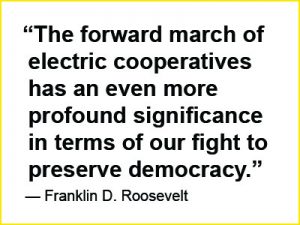
During the Great Depression era, President Franklin D. Roosevelt recognized the need to electrify the rural areas of the country, viewing infrastructure as a key facet in his economic recovery initiatives. He was inspired by the cooperative movement founded in England almost 100 years earlier by a group of English weavers who disliked the high prices of groceries sold in company-owned stores. This disgruntled group pulled their own money together to buy their own food and initiated a new type of business—the cooperative. President Franklin D. Roosevelt applied this co-op approach to solve the electric infrastructure problem by creating the Rural Electric Association (REA) in 1935. This helped to modernize farming operations and to create new jobs.
In the mid-1930s, 9 out of 10 rural homes were without electricity. The possibilities enlightened by the development of the REA brought farmers, ranchers, and rural families together around a common interest in lighting up rural America. Five dollars was all it took to gain access to membership and equity in bringing power the countryside.
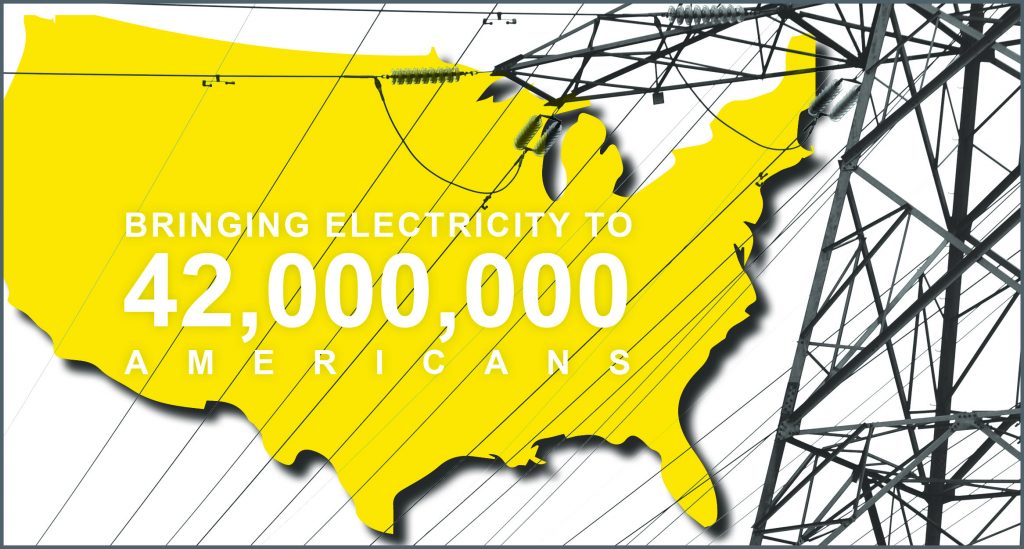
The Rise of Electric Cooperatives
Born from an immediate challenge of national crisis during World War II along with the mission to electrify rural America, the National Rural Electric Cooperative Association (NRECA) was established in 1942. During this time, there were widespread shortages of construction material needed for electric development. The NRECA was organized to help solve this issue as well as to facilitate insurance coverage for newly established cooperatives and to alleviate wholesale power problems.
In the mid-1930s to early 1940s, there was an increasing demand for electrifying remote and rugged regions of the United States. And by 1953, more than 90 percent of U.S. farms had electricity.
These initial accomplishments are the basis of the modern NRECA that is still driven by its mission to help its member cooperatives improve the lives of their consumer-members. Today, they represent over 900 consumer-owned, not-for-profit electric cooperatives, public power districts, and public utility districts in the United States—bringing electricity to over 42 million Americans.
The current responsibilities of the NRECA are to:
- Oversee cooperative employee benefit plans
- Carry out federal government relation activities, such as lobbying
- Conduct management and director training
- Spearhead communications, advocacy, and public relations initiatives
- Coordinate national and regional conferences and seminars
- Offer member cooperatives advice on tax, legal, environmental, and engineering matters
- Perform economic and technical research
Cooperatives around the world operate according to the same set of core principles and values, adopted by the International Co-operative Alliance. These principles are a prime example of how America’s electric cooperatives put the needs of their members first (NRECA).
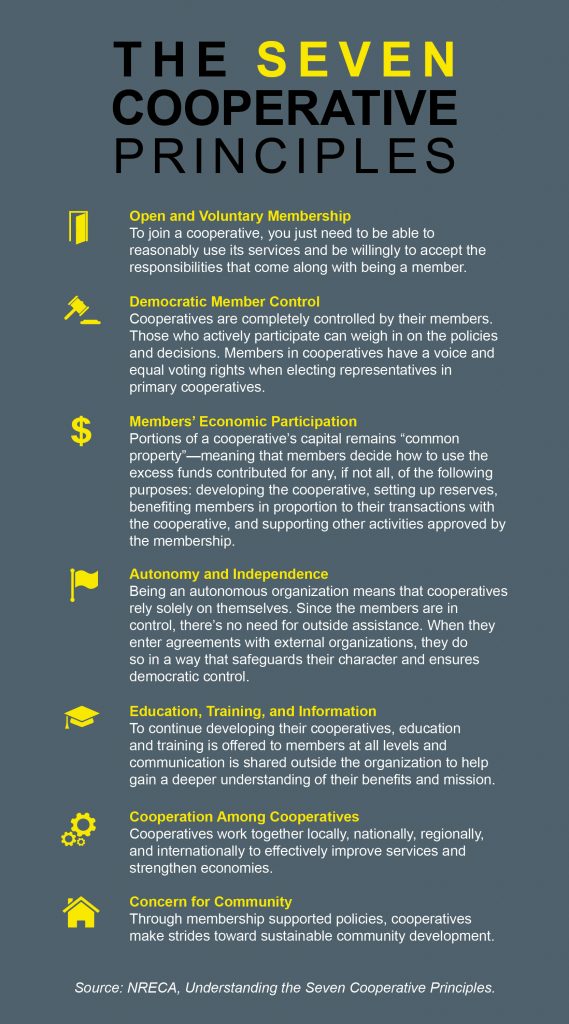
Progress Through Principles
The NRECA fosters innovation among their member cooperatives through technology and energy advancements—improving quality of life and further developing cooperatives to offer better solutions.
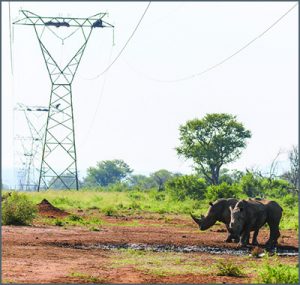
These innovations also foster a shared sense of purpose to look abroad and utilize the co-op model to assist other countries in electrifying their rural areas—bringing the cooperative idea full circle. To this day, their mission continues as NRECA International makes strides toward growth, sustainability, and prosperity in the developing indigenous electrification institutions. NRECA International works in 16 countries outside of the United States spanning across Latin America, Asia, and Africa.
For over 50 years, the NRECA has been considered a global ambassador for the cooperative business model. As a leader in energy innovation with safety in the forefront, we can be sure that the NRECA will stay engaged in progressing technology, the use of energy, the development of cooperatives, and resources for our communities—illuminating the globe.
